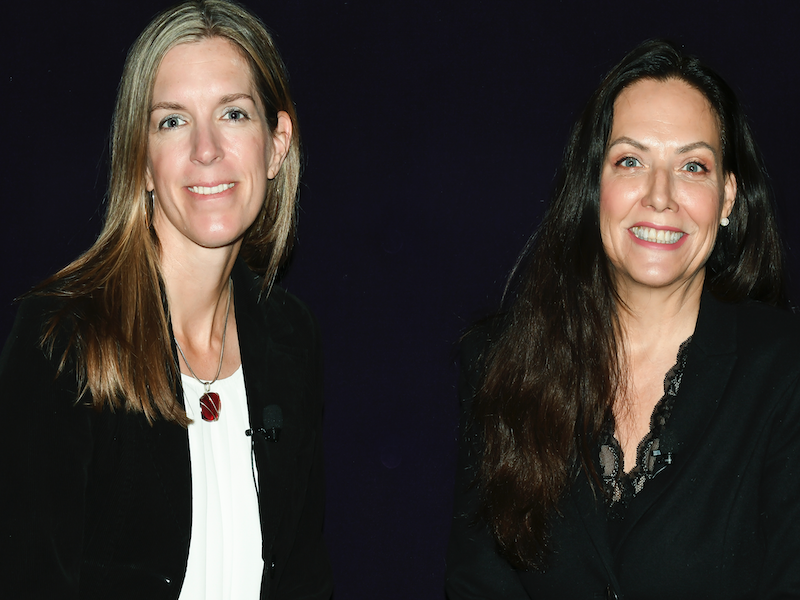
Many plan members are experiencing risk factors related to poor mental, physical and financial well-being, but often don’t know they can turn to their benefits plans for help.
Indeed, when Canada Life’s disability claims report asked plan members going on disability whether they sought out counselling through their benefits plans, more than half said they didn’t know where to go to find help. “It isn’t that they don’t appreciate the benefits, but it was too hard for them to find,” said Kimberly Ferris (pictured left), the insurer’s organizational health consultant, during a session at Benefits Canada‘s 2023 Healthy Outcomes Conference in October. “When you’re in a place of unwellness, if it isn’t easy for you to find, you’re going to give up.”
Read: Canada Life offering medication assistance to plan members on disability leave
She also shared data from Canada Life’s 2022 health risk assessment questionnaire, which found 64 per cent of respondents had moderate or high risk for financial stress and poor financial well-being. In terms of physical well-being, 74 per cent of respondents had a moderate or high diet risk, 64 per cent were at moderate or high risk for physical inactivity and 59 per cent had a moderate or high weight risk.
Plan members’ mental well-being was particularly worrying, noted Ferris, with 64 per cent experiencing a moderate or high risk of stress and 29 per cent at a moderate or high risk of depression. “It’s really alarming how vulnerable and unwell people are. There’s a real responsibility on us as organizations, but [also] as colleagues to look out for each other.”
Some employers are creating personas and digital guides to help employees navigate their benefits plans, she said, suggesting they also review and enhance their health benefits plans as necessary. Educational resources on ergonomic work setups, defined accommodation policies and regular check-ins with remote employees can also make an important difference in overall employee well-being.
Barb Martinez (pictured right), Canada Life’s national practice leader for drug solutions, also spoke during the session, highlighting trends from the insurer’s claims data. For example, the average amount covered per plan member for psychology claims increased by 20 per cent in 2022, driven by higher utilization. However, the rate was lower than 2021, she noted, which indicates a reversion after coronavirus pandemic-related claims.
Read: Claims paid out to support mental health up 75% since 2019: CLHIA
Looking at the spend for mental-health drugs, Martinez said the average amount covered per member increased by three per cent and the average amount covered per claim rose by four per cent. However, utilization dropped slightly, by one per cent.
In 2022, the average drug spend covered per member was $1,268, a small increase over $1,232 in 2021. While utilization remained flat, the number of claims per member increased, as did the amount covered per claim, driven by inflation, prescription costs, provincial and national regulation, coverage eligibility and patent expiries, she said.
In addition, diabetes treatment drugs represented 15 per cent of the insurer’s total drug claims in 2022, maintaining its No. 1 spot. The other most common therapeutic classes were biologics, skin disorder and acne, allergies and respiratory diseases and cardiac disease.
Read more coverage of the 2023 Healthy Outcomes Conference.
